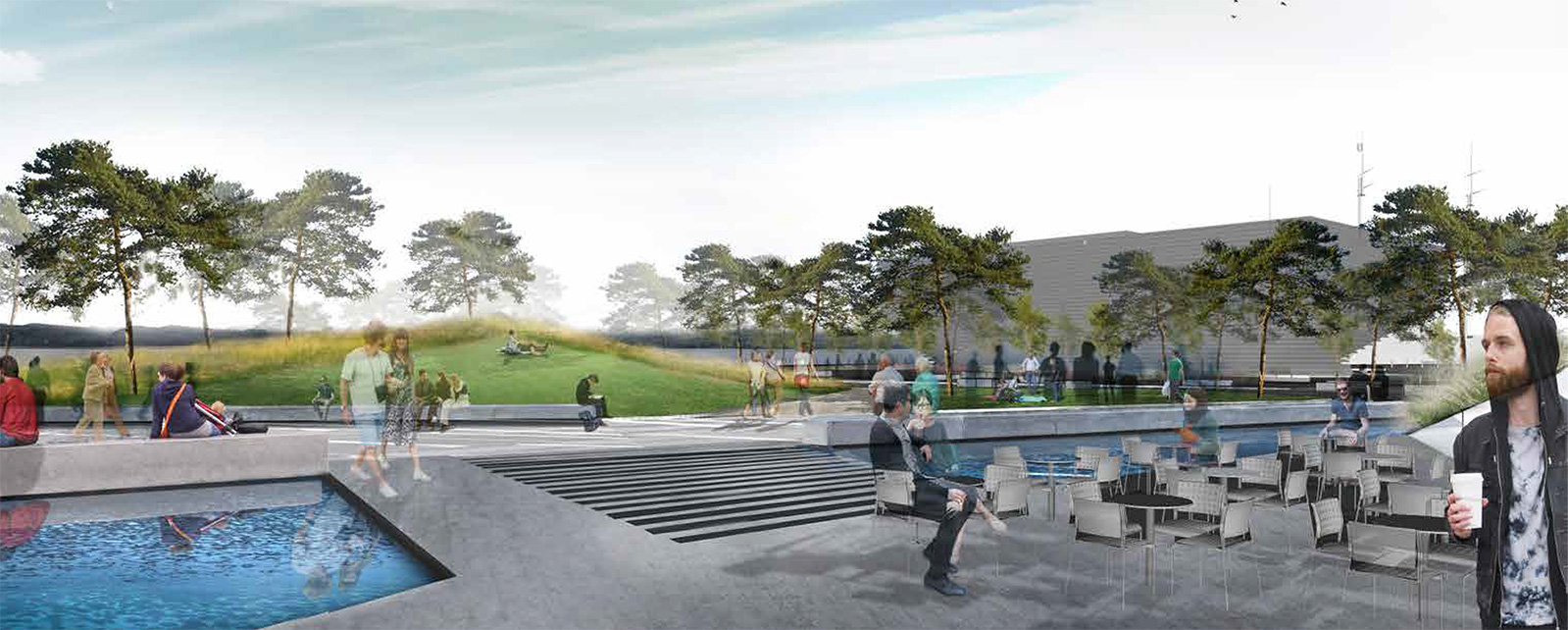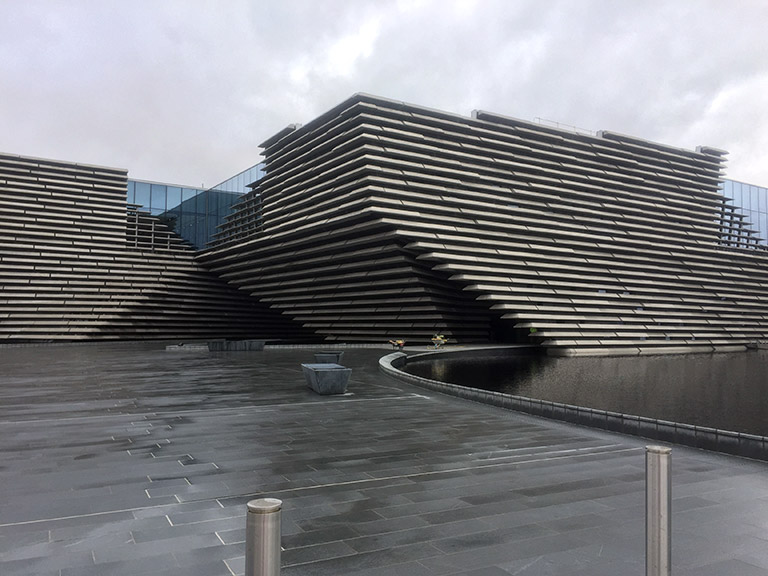(Follow and register using that link and you get an extra 100,000 credits!)
Cookie Consent popups and GDPR?
GDPR, Privacy and WordPress
These impending regulations coupled with the fallout from the high profile Facebook / Cambridge Analytica data mis-use has brought the whole issue of data protection, privacy and handling of user data to the forefront of people’s minds. The consequences of mis-use of personal data provided to websites have been shown to be potentially far reaching.
Personal Data and Privacy
In the light of both GDPR and Facebook’s privacy issues the development community around WordPress has been quick to respond with enhancements to increase its compliance with the requirements of GDPR. WordPress 4.9.6 was released 17th May was a minor update in version numbering but added a few new settings and controls in the WordPress backend to help with compliance, the following is quick overview of what has been added and what the intentions are behind them.
After updating to 4.9.6 you will see a popup highlighting the new “Personal Data Export and Erasure” features that have been added to the Tools menu, along with a new Privacy feature in the Settings menu.

Privacy Policy
Accessing the new Privacy feature in the Settings menu will show a general overview of why you may need to add a Privacy Policy page to your website. Whilst GDPR is currently the most prominent regulation which may affect the legal need for a privacy policy page there are also other regulations in place around the world.

You can then select an existing Privacy Policy page if you have one or you can click the “Create New Page” option which will add a new page to your site with suggested privacy policy content, which you can then edit. Some of this content is more broad generic privacy information but some such as the “Comments” section details information that may be held when users comment on your WordPress site. So even if you do not have users logging in to your website it is important to note that the process of simply leaving a comment on your website involves the person doing so to provide some personal information in this process and the saving of cookies in the user’s browser. Subsequently there is a new permission checkbox on comment forms to allow users to explicitly consent to this.

Export Personal Data
In the Tools menu there are two new features added to provide a way to manage the personal data of specific users’ data on your website. Regulations like GDPR require that users are able to request to see all of the data that your website may hold about that user, the new “Export Personal Data” function allows you to enter the email address of a user which will then email a link to a zip file of all of the data held relating to that email address.

Erase Personal Data
The second new addition to the Tools menu is the “Erase Personal Data” function. This provides a way for any identifying information related to a user to be erased from the site. It’s worth noting that this doesn’t delete actual comments from the site but it does remove any way for these to be identified either on the front-end or back-end of the website.
You enter the email address of the user requesting erasure of their personal data into the field and then this will send out an email to the user asking them to confirm the erasure of their data, so it puts the ultimate control of this data in the user’s hands.

Are you a plugin developer?
If you are a WordPress plugin developer then hopefully you haven’t been oblivious to these changes that have been happening in WordPress core, but if not then it’s worth taking a look at the update guide for WordPress 4.9.6 as there is some impact on plugin developers. Particularly if your plugin handles any personal user data then this may be extremely important for you to get up to speed on: https://make.wordpress.org/core/2018/05/17/4-9-6-update-guide/
You should also have a good read through the Privacy section of the Plugin handbook: https://developer.wordpress.org/plugins/privacy/
What next?
These tools in WordPress core are just the start of an increased focus on user privacy and data security within WordPress and the many plugins in the WordPress ecosystem. You can expect some further additions in future releases and in particular new features added to third-party plugins in the interest of data protection and privacy.
Pushing Boarders
A unique line-up of pro-skaters, community groups, NGOs, policy-makers and academics present a series of talks and Q&As exploring the social impact of skateboarding worldwide
There’s an amazing lineup of speakers for this event too so worth checking out if you’re in London or can make the trip there.
The Woman Who Gave the Macintosh a Smile
“But I loved the puzzle-like nature of working in sixteen-by-sixteen and thirty-two-by-thirty-twopixel icon grids, and the marriage of craft and metaphor.”
![]()
Design Canada documentary
Through the lens of graphic design, Design Canada follows the transformation of a nation from a colonial outpost to a vibrant and multicultural society.
April 15th, 1912
“There is no danger that Titanic will sink. The boat is unsinkable and nothing but inconvenience will be suffered by the passengers.”
Phillip Franklin, White Star Line vice-president, 1912

Originally posted on Instagram: https://www.instagram.com/p/Bhmxvn-FQJc/
Skateboard urbanism, hostile design and the V&A Dundee
Some of those people will have noticed with anticipation the stone benches and ledges of the mirror pool and contemplated not just their aesthetics but also their functional use. Skateboarders tend to view cities and architecture differently than the average person walking through a town centre, seeing potential for skating in the various objects and structures encountered in the urban environment.
“Skaters by their very nature are urban guerillas: they make everyday use of the useless artifacts of the technological burden, and employ the handiwork of the government/corporate structure in a thousand ways that the original architects could never dream of.” ~ Craig Stecyk
As the quote above by Craig Stecyk suggests, very often the creators of architectural surfaces have not had in mind some of the ways that people ultimately interact with them, skateboarding, bmx, parkour, all make use of the urban environment in alternative ways. Walls that were intended to contain or guide people become something to jump over, grind and slide on.
This latter point is what raises a concern about the benches, ledges and the general surrounding area of the V&A Dundee. Has the “skateability” of the surrounding street furniture been a consideration when it has been designed and built? Is this going to be a surprise consequence and result in the deployment of hostile design measures to prevent anyone trying to skate any element of Kengo Kuma’s creation?
Skateable by design – Glasgow Museum of Transport
In 2011 Glasgow’s £74m Riverside Museum of Transport, designed by renowned architect Zaha Hadid, was opened to the public. From the outset the museum was designed to have a multi-functional open plaza area intended for hosting events and to be specifically skateboard-friendly. Lawrence Fitzgerald, Project Director for the museum describes the intentions:
“Rather than discourage the informal use of the hard landscape by skateboarders and cyclists, the Riverside museum provides an undulating and kerb-free space for this hard-to-attract young audience. Inside the museum, teenage transport is further validated through displays on Glasgow skateboarding, BMX and chopper bikes.”
So from the outset skateboarders have been encouraged to skate parts of the building itself and in the area surrounding the building. Rather than attempting to prevent this usage they instead have embraced and actively encourage it, and in turn to encourage a younger demographic to have a reason to visit the museum. Their commitment to this has continued with the hosting of various skate competition events and also in the summer of 2017 with the addition of purpose built concrete features to provide even more opportunities for skateboarders.
For a Museum of Transport there would obviously have been quite a degree of irony if they had chosen to actively fight against these activities.
Unskateable by design – Bristo Square, Edinburgh
In a fairly stark contrast to the approach of actively embracing skateboarding from the outset there is the example of Bristo Square in Edinburgh. A public space within the University of Edinburgh’s campus which many people passed through and home to many skateboarders, as well as a few homeless people. This was a prime urban skate location for decades, skateboarding was never actively encouraged in Bristo Square before the refurbishment and it definitely wasn’t an activity that was considered in its design, but it was an extremely popular location and visited by many skaters from across Scotland.
Bristo Square underwent a major refurbishment in 2015 much to the dissatisfaction of the skate community. A local student is quoted in an article on the youth culture site The Tab:
“It’s a missed opportunity by the university. They could have included the skateboarders in their plans, combining the user groups. Perhaps the university was a bit narrow-minded with its approach. They didn’t even consider skateboarding. It seemed a little bit from their plans as though they were purposely going out of their way to prevent it.”
The refurbishment of Bristo Square was used as an opportunity to prevent various “anti-social behaviour”, among which skateboarding was specifically clarified in the planning application documents as being one of them:
“Skateboarders have been a problem in the past and regularly return to the area. Consideration should be given to materials such as tactile pavers and landscaping techniques that dissuade skateboarders from using the area. The position and design of handrails on either side of the pavilion should be such that it also discourages use by skateboarders and bikers”
These purposeful design decisions were taken despite the planning application documents also citing a report prepared by the Edinburgh Urban Design Panel in 2012 which considered skateboarding a contributing factor to what made Bristo Square a positive part of Edinburgh’s urban environment:
“The mix of different type of people, including people passing through, students and skateboarders and others that use Bristo Square mean that even though it presents challenges for clarity of pedestrian movement, community safety and so on, the space does contribute positively to the life of the city.”
Whilst this does acknowledge the potential issues of having pedestrians and skateboarders together in the same environment it appears to favour the approach of embracing all potential uses of the space, as opposed to actively trying to prevent them as the resulting redesign of Bristo Square has done. An approach that has worked well for Glasgow Museum of Transport.
Which approach for the V&A?
As the V&A Dundee is a museum of design there is a strong argument that the design of the surroundings and the street furniture around it should take into account the different ways that people might interact with it. As shown from the examples of Glasgow Museum of Transport and Edinburgh’s Bristo Square, people don’t just walk or sit in urban environments.
The creation of the Slessor Gardens open space and the planned waterfront “urban beach” shows some consideration of the need to provide ways to encourage people to spend time in the area. But are we going to end up with attempts to ban and discourage activities like skateboarding and excluding a thriving cultural activity, and an important younger demographic, because it doesn’t fit in with how the area was designed?

A sure sign that these activities were not considered will be if we see some hastily added hostile design “skate-stopper” features added to all the benches and ledges around the V&A Dundee and waterfront areas.
Skateboard urbanism – rise of the intentionally skateable city?
In contrast to the anti-skate / hostile-design approach it is worth looking at the city of Hull, a city with a similar rising cultural heritage and renewal to Dundee. Hull, the 2017 UK City of Culture, is the UK’s first “skateboarding friendly” city and plans to design “skateboard-friendly” areas in new projects for public buildings.
Hull joins other cities around the world like Melbourne, Copenhagen and Malmö who have also declared that skateboarding, and other urban sports, are a key aspect of their cultural heritage, embracing and encouraging the use of city architecture and spaces for these activities rather than attempting to ban and confine them only to dedicated skateparks.
Iain Borden, Professor of Architecture and Urban Culture at University College London, was one of the first to explore the relationship between the urban environment and skateboarders in his book “Skateboarding, space and the city: Architecture and the Body”. Rather than just being places where people go to work or go shopping the urban environment is a place to be explored and experienced in its own right. In a Kingpin magazine article Iain Borden had this to say about Hull’s plan to become the UK’s first skateable city:
“And so even more welcome is Hull’s plan to provide “skateboard-friendly” areas around public buildings – integrating skateboarding into the everyday public arena is a hugely positive step forward, and follows the example of places like Malmö, Innsbruck, Cologne, etc., who have all made ambiguous spaces which aren’t outright skateparks but are still open to skating. It remains to be seen, of course, exactly what Hull will provide in this area, but the intention is admirable. And if Hull can have a go, why not other UK cities?”
Dundee – skateboarding friendly, by design?
As a city which is the UK’s only UNESCO City of Design there is a great opportunity in Dundee to embrace “skateboard urbanism” and to see how it can benefit the regeneration of the city as a whole. Two of Dundee’s aims as a City of Design are:
- “use design as a cornerstone in addressing both social inequalities and opportunities that exist in the city”
- “focusing on social design, redesigning public service and community engagement”
With these aims in mind, it would seem that it’s time for a conversation about how skateboarding, and other urban sports such as parkour, BMX etc, fit in to the V&A Dundee, the surrounding waterfront space and the city as a whole.
Earlier in this article I poised a question regarding whether the “skateability” of the V&A and its surroundings was a consideration during the design process. Following on from that it just remains to ask one more question: Will those involved in the development of the V&A Dundee and regeneration of these areas take the skate-friendly approach of Glasgow’s Museum of Transport or the hostile-design approach of the Bristo Square redevelopment?

References & additional information for further reading:
- “Skateboarding, space and the city: Architecture and the Body” by Iain Borden, Professor of Architecture and Urban Culture at The Bartlett, UCL. https://www.bloomsbury.com/uk/skateboarding-space-and-the-city-9781859734889/
- Skate Malmö: http://skatemalmo.se/
- “Hull pledges to become Skateboard centre”: http://www.bbc.co.uk/news/uk-england-humber-38092818
- ”Hull to be the first ‘skateboard friendly’ city in the UK”: https://sidewalkmag.com/skateboard-news/hull-first-skateboard-friendly-city-uk.html
- “Skate Hull | How Hull plans to become the UK’s first skate city”: https://kingpinmag.com/features/articles/skate-hull-hull-plans-become-uks-first-skate-city.html
- “Skate Melbourne” 2017-2027 urban plan: https://participate.melbourne.vic.gov.au/skate?_ga=2.177248421.1691756552.1521781425-1932170524.1521781425
- http://www.melbourne.vic.gov.au/community/sports-recreation/sport-hobbies-activities/Pages/skating.aspx
- “Sharing spaces” https://participate.melbourne.vic.gov.au/skate/sharing-spaces
- “Long Live South Bank” (a campaign which succeeded in protecting the culturally significant Undercroft area): http://www.llsb.com
- Bristo Square, Edinburgh
https://thetab.com/uk/edinburgh/2015/05/03/mourning-the-loss-of-bristo-square-the-birthplace-of-scottish-skateboarding-13830 - Planning application document for the refurbishment of Bristo Square (Ref ID41848): http://www.edinburgh.gov.uk/download/meetings/id/41848/item_no_4_1-15_bristo_square_edinburgh_mcewan_hall_–_refurbishment_of_existing_building_with_basement_level_extension_and_relandscaping_of_adjacent_bristo_square
- Edinburgh Urban Design Panel: http://www.edinburgh.gov.uk/info/20013/planning_and_building/940/edinburgh_urban_design_panel/3
- “Farewell Bristo Square, the Home of Edinburgh Street Skating”: https://www.vice.com/en_uk/article/8g3d5p/farewell-bristo-square-the-home-of-edinburgh-street-skating-940
- “The secret colonies of graffiti artists and skateboarders”: http://www.bbc.co.uk/news/magazine-22551669
- Hostile Design:
https://www.bigissue.com/news/hostile-takeover-welcome-public-spaces/ “I’m not sure what I find more offensive – the hidden agenda or the addition, like spikes. It is a bit like adding a swear word into a polite conversation versus saying something polite that has another nastier meaning.” – quote from Iain Borden regarding anti-skate, anti-homeless measures.
https://hostiledesign.org - Glasgow Museum of Transport: https://beta.glasgowlife.org.uk/museums/venues/riverside-museum
- Museum Association article about Riverside Museum of Transport https://www.museumsassociation.org/museum-practice/your-outdoor-case-studies/15062012-riverside-museum
- “The new skate city: how skateboarders are joining the urban mainstream”: https://www.theguardian.com/cities/2015/apr/20/skate-city-skateboarders-developers-bans-defensive-architecture
-
“New Oslo Opera House Is Really A Stealth Skate Park” – Wired magazine: https://www.wired.com/2008/11/pl-design-7/
-
Phaeno Science Centre – Zaha Hadid: https://en.wikipedia.org/wiki/Phaeno_Science_Center
- Hull City of Culture – Hull’s first skateboarding friendly site opens:
https://sidewalkmag.com/skateboard-news/hull-city-culture-hulls-first-skateboarding-friendly-site-opens.html
Instagram-api-ocalypse
To continuously improve Instagram users’ privacy and security, we are accelerating the deprecation of Instagram API Platform, making the following changes effective immediately. We understand that this may affect your business or services, and we appreciate your support in keeping our platform secure.
These capabilities will be disabled immediately (previously set for July 31, 2018 or December 11, 2018 deprecation). The following will be deprecated according to the timeline we shared previously:
Khoi Vinh – “In Defence of Design Thinking, Which is Terrible”
“So when I consider design thinking, it matters less to me whether it leads to a lot of bad design or not. What matters to me is whether it helps broaden the language of design, if it helps expand the community of design, if it helps build a world that values and understands design better than it does today. If design thinking is making us more relevant to the world at large, leading non-designers to embrace the way designers think, then the net effect strikes me as positive.”
Read the whole article at: “In Defence of Design Thinking, Which is Terrible”




























